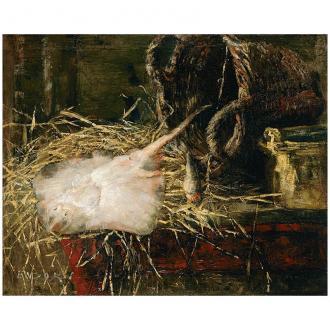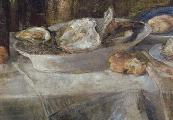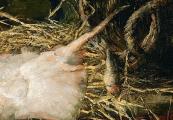This archived website ‘James Ensor. An online museum.’ is temporarily not being updated. Certain functionality (e.g. specific searches in the collection) may no longer be available. News updates about James Ensor will appear on vlaamsekunstcollectie.be. Questions about this website? Please contact us at info@vlaamsekunstcollectie.be.
Still Lifes (Ingredients for a Meal)

In the introverted world of James Ensor, the still life holds a special place. The genre speaks well to the private character of the artist that his compositions bring to light from the intimacy of the bourgeois interior, shrouded in a surplus of objects and semi- darkness. In the beginning, his attention was mainly given to quotidian motifs such as flowers and vegetables, meat and fish, that along with the shells and eastern objects from his mother‘s shop formed the departure points for compositions whereby the artist began with light, form and colour. Later, between 1885 and 1888, he only explored the still life in the case of drawings and primarily went in search of the bizarre and baroque objects, which were strong testimonies of fantasy. With reality as the departure point he allowed himself to be led by a visual and imaginary automatism, with which he created new dream images.
He then later translated this evolution into his paintings. From that point, he approached the still life on the one hand from a traditional view whereby he placed various objects on the table such as 'Chinoiseries‘, baroque vases, shells and masks and primarily had an eye for colour and nuance of form. While on the other hand, the still life was approached from a theatrical vision whereby he brought to life the inanimate masks, headdresses, costumes and musical instruments through staging, and in doing so, conveyed a message of loneliness and alienation in a privatised manner.
Sabine Taevernier










